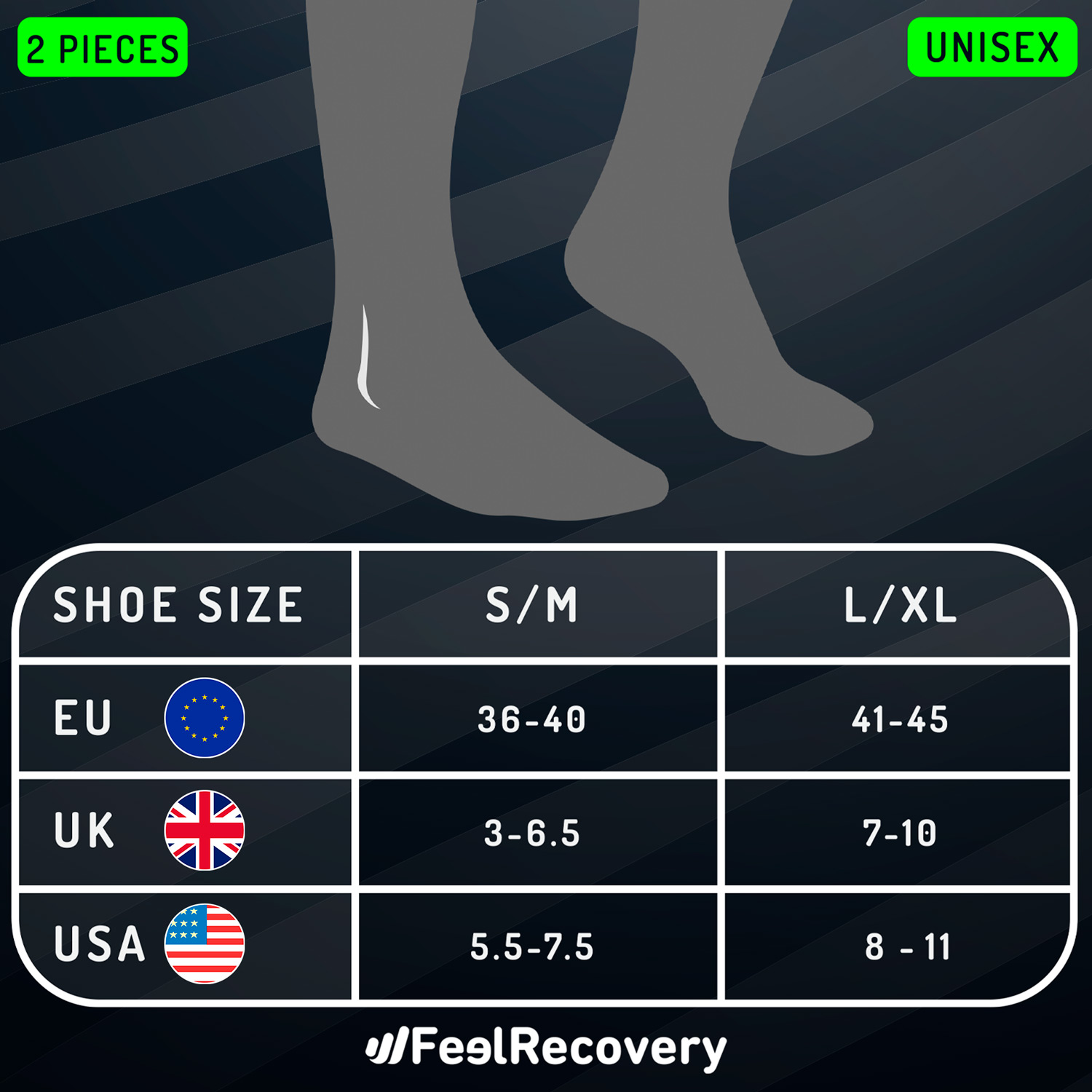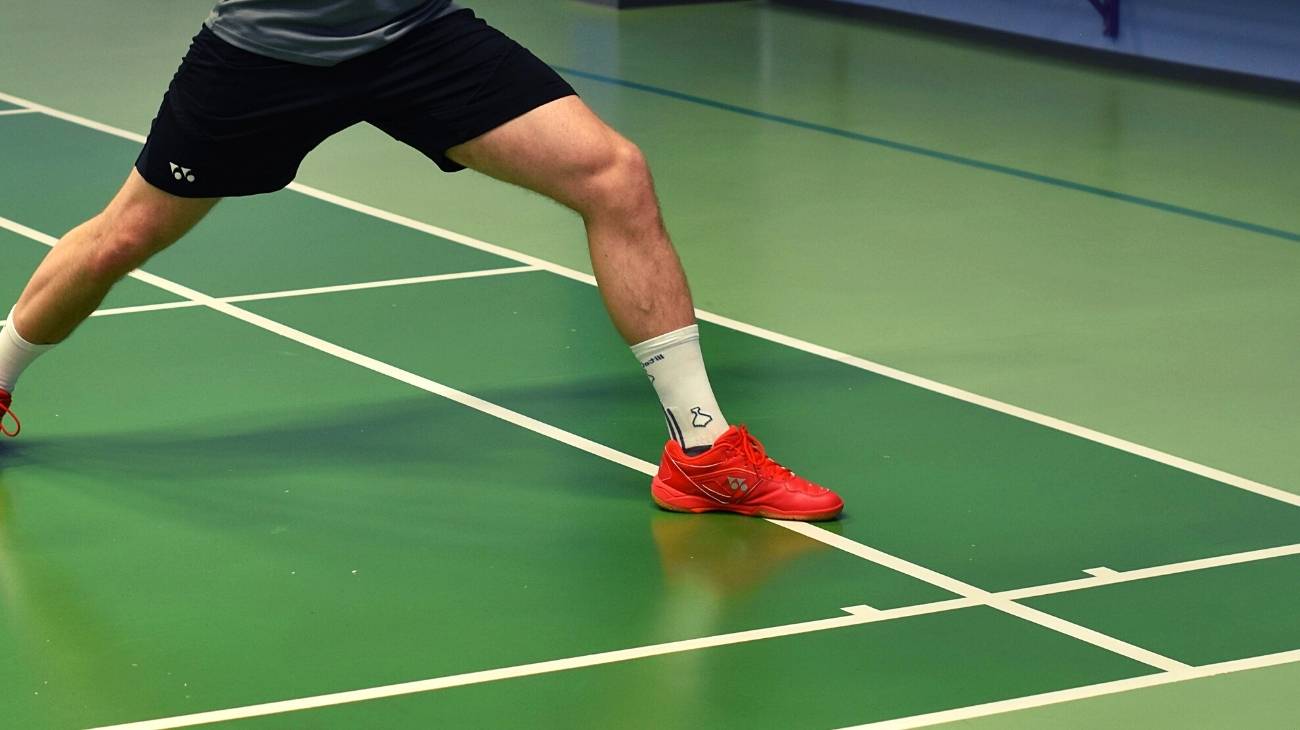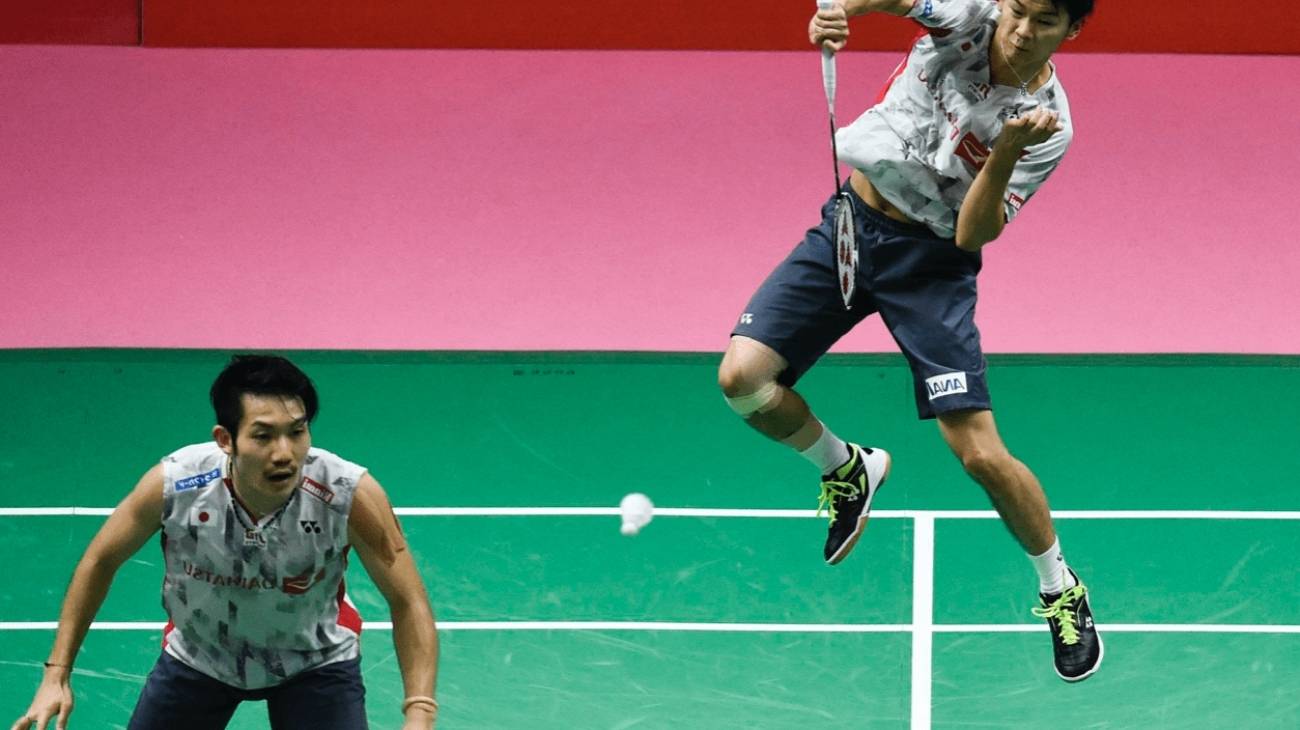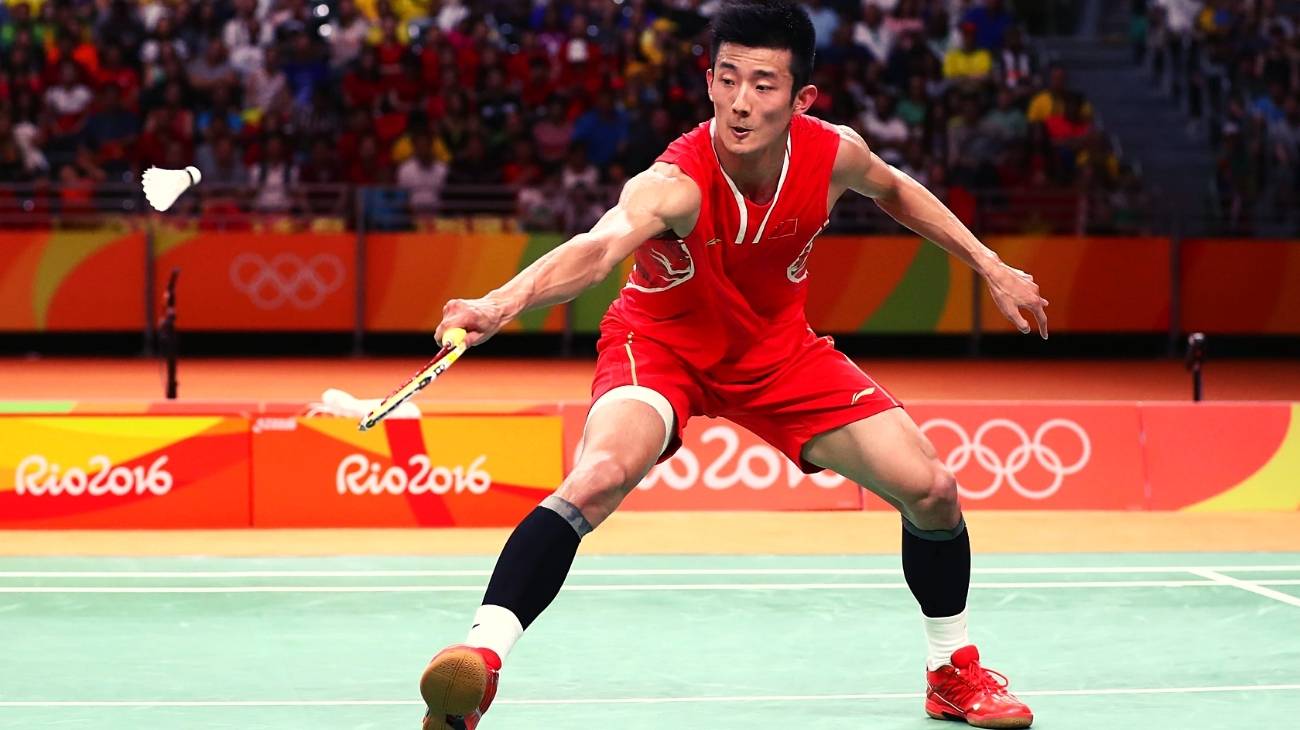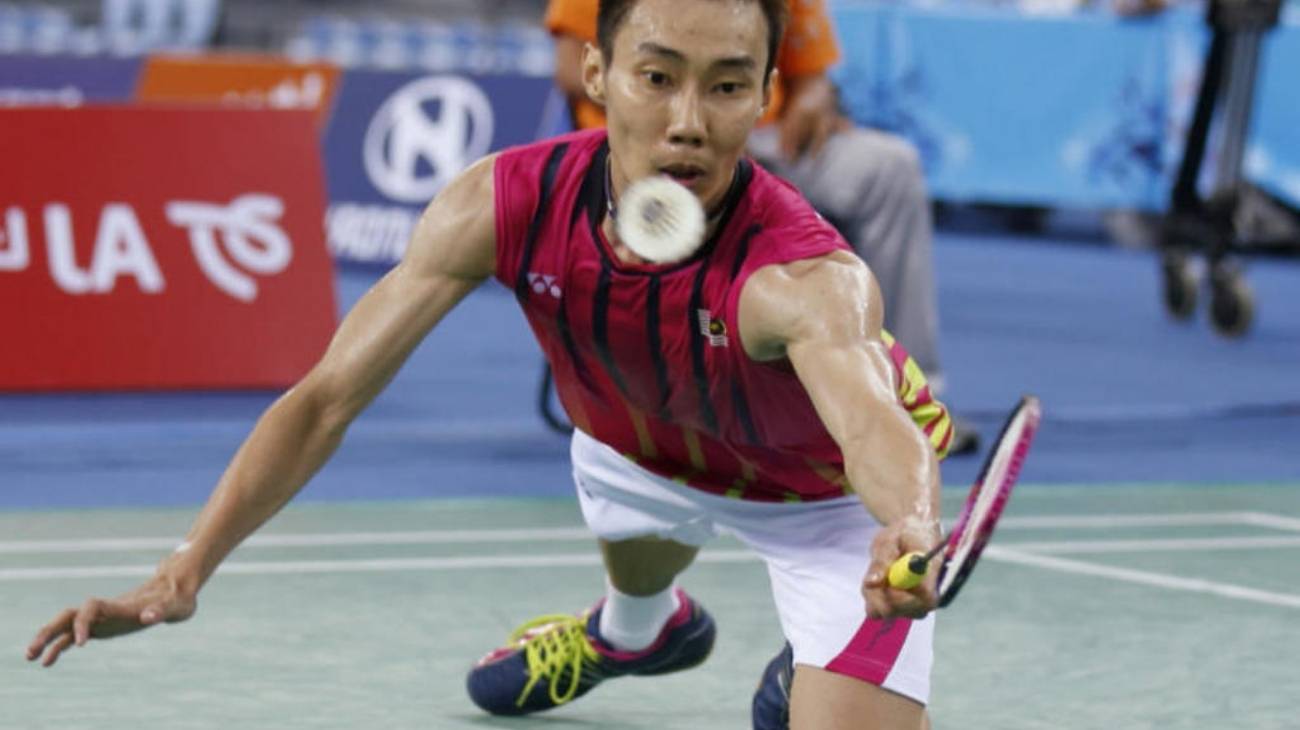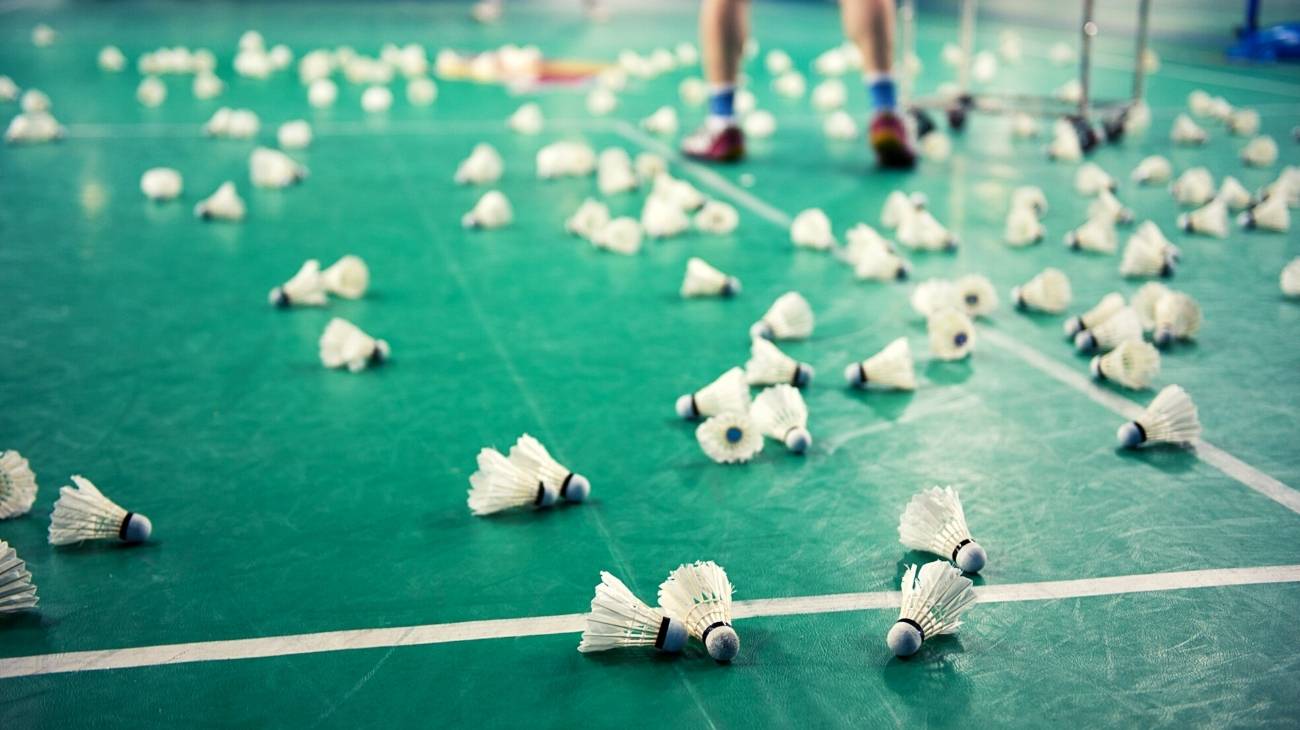If you are passionate about badminton and you are worried about getting injured, in this article you will find the most common foot and ankle injuries to watch out for such as sprains and tendonitis.
In addition, we show you what to do immediately in the event of an injury with indispensable therapies such as RICE to minimise the impact of overloads and bruising sustained during a game.
What are the most common types of foot and ankle injuries when playing badminton?
Badminton is a sport that requires quick and precise movements: jumping, lateral movements and friction with the surface.
Although injuries to the arms are common, the foot is the part of the body that receives all the load of the movements, so it is normal that in the short and long term it generates some injuries that we will describe in this article:
Achilles tendon rupture
It is among the most frequent and serious injuries affecting the back of the calf. The so-called "Achilles tendon" is a fibrous cord that connects the back of the calf to the heel bone. The rupture occurs when it is overstretched, which is why it is a common condition in badminton players who strain to try to reach an opponent's shot that is far away from their position, which will subsequently require an injury.
You will immediately feel a sharp pain at the base of your calf, so stopping activity on the court is imminent. A simple way to tell if you have a partially or completely ruptured tendon is to try to stand on your toes, if you are unable to do so, you will need to immobilise the limb until a doctor is consulted.
Sprained ankle
This is one of the most common injuries, but also one of the most minor. It occurs when the ankle bends, twists or turns in an atypical or different way to its natural mechanics, something extremely common in badminton, either due to the subsequent braking when trying to reach an opponent's return or due to a bad movement when moving around the court, which causes the ligaments to reach the limit of their normal amplitude and a sprain is generated. Most of them occur on the outside of the ankle.
Sprains have three grades that measure the depth of the damage: grade I, it is a simple sprain; grade II, the ligaments suffer a partial tear, the intensity of the pain is between intense and moderate; grade III, when the ligaments are completely torn and it is necessary to immobilise the ankle to begin an adequate recovery.
Ankle bursitis
The retrocalcaneal bursa is like a cushion that prevents the joints from colliding with each other. Bursitis is caused by repetitive movements that end up straining the tendons. This is a consequence of constant poking and braking during a game of badminton and when it happens, these pads become inflamed, which generates a sharp pain in the joint. The best thing to do when you feel this is to stop the physical activity to prevent the injury from progressing and becoming much more serious.
Foot sole with fallen arch
A colloquial way of calling this bone injury is to have "flat feet". A fallen arch causes pain in the heel immediately, as well as in the sole of the foot and ankle. Even when the pain is extreme on the outside of the foot, there is often discomfort in the tibia, knee, hip and back. Like bursitis, flatfoot is not a one-off injury, but an accumulation of wear and tear from badminton footwork. Wearing the right footwear will be crucial to avoid this problem.
Chondropathies
When there is increased wear and tear on the cartilage, chondropathy can occur. This is nothing more than a deformed cartilage that can be located anywhere in the body, but in badminton they are more common in the ankles due to excessive wear and tear and the accumulation of injuries that are generated in this joint. Its origin is also genetic and in adulthood it is detected when practising a high intensity sport such as badminton.
Plantar fasciitis
Under the foot there is a strip of thick tissue whose elasticity is lost with age or repetitive physical overexertion; this strip is the fascia. As it becomes inflamed by the continuous wear and tear generated by explosive movements on the badminton court, plantar fasciitis occurs. Pain and inflammation are the most palpable signs, even when getting up in the morning the pain is often worse.
Foot fractures
It is rare for a fracture to occur during a badminton match, however, it should not be ruled out as a fall on the court or a severe sprain can cause a fracture. Low-energy fractures are the most common in sporting activities which, due to high stresses, lead to malleolar fractures.
This is perhaps the worst thing that can happen to a badminton player, especially if the reason for the fracture is due to recreational, non-competitive badminton. Depending on the type of fracture, immobilisation of the foot or surgery are the most commonly used options for correction.
Best products for badminton ankle and foot injury recovery
Bestseller
-
Ice Pack for Foot - Cold Therapy Socks (Black)
£20,95 -
Ice Pack for Foot - Cold Therapy Socks (Green)
£20,95 -
Ice Pack for Foot - Cold Therapy Socks (Pink)
£20,95 -
Microwavable Heated Slippers (Hearts)
£24,95 -
Microwavable Heated Slippers (Oxford)
£24,95 -
Microwavable Heated Slippers (Sport)
£24,95 -
Microwaveable Wheat Bag for Pain Relief (Hearts)
£20,95 -
Microwaveable Wheat Bag for Pain Relief (Oxford)
£20,95 -
Microwaveable Wheat Bag for Pain Relief (Sport)
£20,95
-
2 Ankle Compression Sleeve (Black/Gray)
£20,95 -
2 Ankle Compression Sleeve (Green/Navy)
£20,95 -
2 Ankle Compression Sleeve (Pink/Bordeaux)
£20,95 -
Sport Compression Socks (1 Pair) (Black/Gray)
£20,95 -
Sport Compression Socks (1 Pair) (Green/Navy)
£20,95 -
Sport Compression Socks (1 Pair) (Pink/Bordeaux)
£20,95
How to apply the PRICE therapy to treat first aid injuries in badminton?
The possibility of injury must always be taken into account. That is why we explain what the PRICE therapy consists of, which is the update of the RICE protocol, as this set of actions that you should do in the first minutes after an injury was previously known:
- Protection: securing the affected ankle with pads or protectors is essential to prevent further damage to the ankle that could aggravate the injury.
- Rest: Take a few minutes to give the ankle ligaments a chance to recover. Immediate resumption of movement may aggravate the condition. Without rest, the injury can become chronic.
- Ice: Applying an ice pack for 15 to 20 minutes will reduce pain and swelling in the ankle, however this is only temporary if the reason is a sprain or fracture.
- Compression: In addition to ice, there should always be a bandage or ankle brace on hand for this step. The compressive bandage helps to stop the swelling, periodically making sure that the swelling does not progress.
- Elevation: in this phase the foot or ankle is elevated above the heart to facilitate the reduction of swelling. This phase also facilitates venous return. By combining this elevation with gentle exercise, better results are seen.
This method is only used as a first aid measure and never as a definitive treatment. After an injury, you should always consult a medical specialist to determine the severity of the injury and to define the steps to follow for the final recovery.
References
- Liu, X., Imai, K., Zhou, X., & Watanabe, E. (2022). Influence of Ankle Injury on Subsequent Ankle, Knee, and Shoulder Injuries in Competitive Badminton Players Younger Than 13 Years. Orthopaedic Journal of Sports Medicine, 10(5), 23259671221097438. https://journals.sagepub.com/doi/pdf/10.1177/23259671221097438
- Garrick, J. G., & Requa, R. K. (1988). The epidemiology of foot and ankle injuries in sports. Clinics in sports medicine, 7(1), 29-36. https://www.sciencedirect.com/science/article/abs/pii/S027859192030956X
- Glick, J. M., Gordon, R. B., & Nishimoto, D. (1976). The prevention and treatment of ankle injuries. The American journal of sports medicine, 4(4), 136-141. https://journals.sagepub.com/doi/abs/10.1177/036354657600400402
- Fong, D. T. P., Hong, Y., Chan, L. K., Yung, P. S. H., & Chan, K. M. (2007). A systematic review on ankle injury and ankle sprain in sports. Sports medicine, 37, 73-94. https://link.springer.com/article/10.2165/00007256-200737010-00006
- Baumhauer, J. F., Alosa, D. M., Renström, P. A., Trevino, S., & Beynnon, B. (1995). A prospective study of ankle injury risk factors. The American journal of sports medicine, 23(5), 564-570. https://journals.sagepub.com/doi/abs/10.1177/036354659502300508
- Krøner, K., Schmidt, S. A., Nielsen, A., Yde, J., Jakobsen, B. W., Møller-Madsen, B., & Jensen, J. (1990). Badminton injuries. British journal of sports medicine, 24(3), 169-172. https://bjsm.bmj.com/content/24/3/169.short
- Fahlström, M., Björnstig, U., & Lorentzon, R. (1998). Acut badminton injuries. Scandinavian Journal of Medicine & Science in Sports, 8(3), 145-148. https://onlinelibrary.wiley.com/doi/abs/10.1111/j.1600-0838.1998.tb00184.x
- Jørgensen, U., & Winge, S. (1987). Epidemiology of badminton injuries. International journal of sports medicine, 8(06), 379-382. https://www.thieme-connect.com/products/ejournals/abstract/10.1055/s-2008-1025689
- Hensley, L. D., & Paup, D. C. (1979). A survey of badminton injuries. British Journal of Sports Medicine, 13(4), 156-160. https://bjsm.bmj.com/content/13/4/156.short
- Pardiwala, D. N., Subbiah, K., Rao, N., & Modi, R. (2020). Badminton injuries in elite athletes: A review of epidemiology and biomechanics. Indian journal of orthopaedics, 54(3), 237-245. https://link.springer.com/article/10.1007/s43465-020-00054-1








